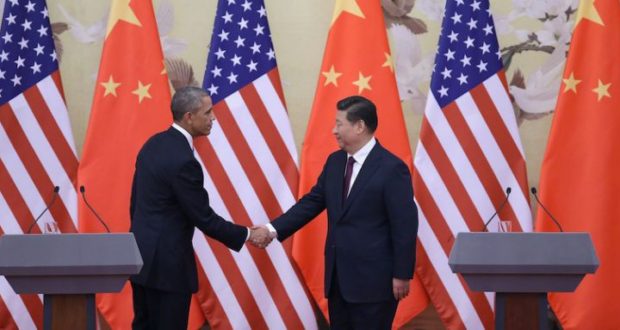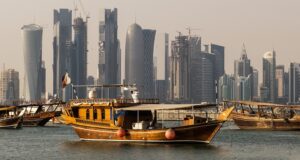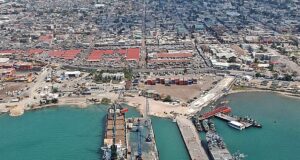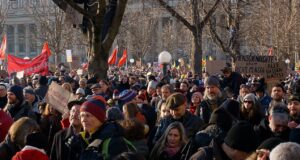January 30th, 2017
By Davis Florick – Junior Fellow
As the Obama Administration’s time in office came to a close, there is prudence in assessing the “Pivot to Asia.” First introduced in late 2011, the policy was intended to reprioritize the United States’ efforts to address what some had euphemistically called “The Asian Century.” Despite the unexpected election of Donald Trump and his move to withdraw from the Trans-Pacific Partnership, the Asia Pacific region will continue to play a core role in US foreign policy. As a result, both the Pivot’s successes and failures offer important case studies that can inform and shape the new Trump Administration. It would not be an exaggeration to suggest the region has become more significant in the eight years since President Obama took office. For the incoming Trump Administration, learning from its predecessor – keeping some aspects of the rebalance, modifying others, and entirely revamping some – is judicious. Examining six states from across the region – two positive examples (Myanmar and Vietnam), two negative (China and Thailand), and two inconclusive (the Philippines and South Korea) – provides the best means to assess the Pivot.
Undoubtedly, the Obama Administration deserves some degree of credit for helping the democratic transition in Myanmar. When President Obama first took office, he followed through on a campaign promise to offer dialogue with rogue regimes, arguing his predecessor had committed a disservice by not doing so. Assistant Secretary of State Kurt Campbell led Washington’s efforts to engage with Yangon. While the US criticized the elections at the time, its labors appeared to have borne fruit with the November 2010 election that coincided with the prison release of Ms. Aung San Suu Kyi, the leader of the opposition National League for Democracy (NLD). With the military junta transitioning to civil authority in the form of the Union Solidarity Party following the 2010 election, the November 2015 vote marked the first time the opposition, the NLD, could openly compete for the presidency. The NLD’s victory a little over a year ago marked a major turning point in Myanmar’s history. By linking economic inducements with political reform, Washington incentivized a glide path toward democracy for Yangon.
Successfully maturing partnership capacity with Vietnam has been one of the most unlikely and intriguing outcomes of the Obama Administration. While Washington’s relationship with Hanoi had slowly improved under the two previous presidents, President Obama’s efforts to accelerate bilateral cooperation were significant. Perhaps the most substantial events between the two states were the 2013 US-Vietnam Comprehensive Partnership and Washington’s decision, in 2016, to remove its arms embargo against Hanoi. The Comprehensive Partnership serves as a vehicle for billions of dollars in economic agreements, environmental sustainability initiatives, and educational development opportunities. Although removing the US arms embargo will not immediately result in a torrent of new cooperation or purchase agreements, Vietnam will likely pursue a number of niche capabilities including surveillance aircraft and maritime-related equipment. Additionally, port visits and high level engagements demonstrate Washington’s political commitment to Hanoi. In doing so, the US is reaffirming its stance on the South China Sea. Due in no small measure to Vietnam’s strategic geographic location and economic potential, improving this bilateral relationship is significant.
Unfortunately, despite the Obama Administration’s successes in some areas, there are a few glaring downsides to the Pivot. Most notably, US relations with China have worsened during the President’s time in office. Although some may argue there has been meaningful progress in the form of executive-level summits and the Strategic and Economic Dialogues, these discussions have been overshadowed by potentially negative actions. In recent years, Beijing’s island dredging and military deployments in the South China Sea have taken place at an ever-accelerating rate, thereby fostering an increasingly volatile environment. Moreover, China recently sent its aircraft carrier, the Liaoning, into the South China Sea, including a pass by Taiwan, and conducted nuclear bomber exercises in the East China Sea, South China Sea, and Sea of Japan. In response to the latest incursion into the Tsushima Strait, both Seoul and Tokyo scrambled fighter jets. Arguably most disconcerting was the December 15th, 2016 act of aggression against a US naval vessel in the South China Sea. During the episode, People’s Liberation Army-Navy personnel seized an underwater US vehicle. Although it was returned several days later, these actions could establish a very negative precedent. Collectively, it appears the Pivot has failed to improve relations with China.
Although still a partner in some respects, Thailand’s relationship with the US seems to be faltering just as its cooperation with China is expanding. Even before Prime Minister Yingluck Shinawatra was removed from office in 2015, relations with Beijing had begun to improve. Largely due to domestic politics – the Shinawatra family’s support is in the ethnically Chinese northern portion of the country – the Shinawatra’s closeness to China was not a surprise. However, following the southern-backed coup that led to her removal in 2015, the US shied away from legitimizing the military government: Washington stated the impeachment was politically motivated and lacked credibility. The Obama Administration’s decision to withhold support allowed the Xi government to pounce. Most notably, Bangkok has since purchased three submarines from Beijing – a sharp contrast in defense cooperation from what had taken place in previous years. Moreover, there continues to be irregular discussions with Chinese investors seeking to build high speed rails through Thailand. Such a program would offer a valuable route for manufacturers in China’s southwestern province of Yunnan. Given the improving ties with Beijing and, to a lesser extent, Moscow, Bangkok appears to be drifting away from Washington in spite of the Pivot.
Perhaps neither clearly positive nor negative, US relations with the Philippines may be hanging in the balance. When the Obama Administration first took office, Manila was being forced to consider its options in the midst of Beijing’s territorial demands in the South China Sea. Less than two decades after evicting US military personnel, Philippine officials were exploring options to bolster its deterrent against Chinese aggression. Renewed defense cooperation culminated in the signing of the 2014 Enhanced Defense Cooperation Agreement. The accord will permit the US access to five military air and port facilities, thereby granting Washington multiple access routes to the South China Sea. From an economic vantage point, US-Philippine trade in goods and services is valued at $25 billion. Given that Manila’s economy has been growing at 4% of gross domestic product per capita over the last ten years, the potential for further market opportunities exists. To leverage the Philippines’ growth and the preexisting relationship, in 2011 the Obama and Aquino administrations signed the Partnership for Growth which was designed to achieve progress along four avenues: bolstering the rule of law, enhancing human capital maturation, improving fiscal performance, and strengthening regulatory quality. Despite these advancements, the newly-elected president of the Philippines, Rodrigo Duterte, has declared that Manila’s partnership with Washington is over. Time will tell whether his declaration becomes reality.
Likewise, although it would appear the US has advanced its relationship with South Korea, Seoul may distance itself from Washington. President Park Geun-hye’s decision to request the deployment of a Terminal High Altitude Area Defense (THAAD) capability on the peninsula has been met with considerable domestic resistance. When the move was first announced in the summer of 2016, there were skeptics at home, but as President Park’s position has weakened, opposition lawmakers have gone so far as to visit China – a vocal THAAD critic. Regrettably, Park’s challengers have declared their desire to rebalance Seoul’s foreign policy to Beijing’s benefit in the hopes that direct dialogue with Pyongyang might be possible via Chinese assistance. This strategy sounds eerily similar to the Sunshine Policy of Kim Dae-jung. Perhaps had the Obama Administration done more to support President Park and explain the utility of THAAD, such an outcome could have been avoided. Yet, as it stands, the next South Korean president may well shift Seoul’s foreign policy orientation decidedly in Beijing’s favor.
As the Trump Administration takes office, there is much that can be learned from the Pivot to Asia. Certainly, President Obama’s policy has delivered mixed results, but recognizing some of its distinguishing characteristics is prudent. Specifically, among states that were once China’s partners, there are openings for engagement. As governments in Myanmar, Vietnam, and elsewhere feel pressure from Beijing to conform, Washington is presented with a unique range of opportunities. Unfortunately, in many other instances, the US should do more to accentuate the benefits it can and does deliver. Conducting senior leader visits, making use of security opportunities, promoting economic cooperation, and exploring person-to-person and developmental programs are all avenues for improved US cooperation. While the Obama Administration attempted to leverage many of these opportunities, officials did not go far enough to achieve their stated ends. Considering that the Asia-Pacific region is more contentious than during the last presidential turnover, particularly as China has explored its strengths, greater US involvement in the region is imperative. Despite challenges elsewhere around the world, the Trump Administration’s foreign policy success could well be defined by how it leads in the Asia-Pacific region.
 Human Security Centre Human Rights and International Security Research
Human Security Centre Human Rights and International Security Research




